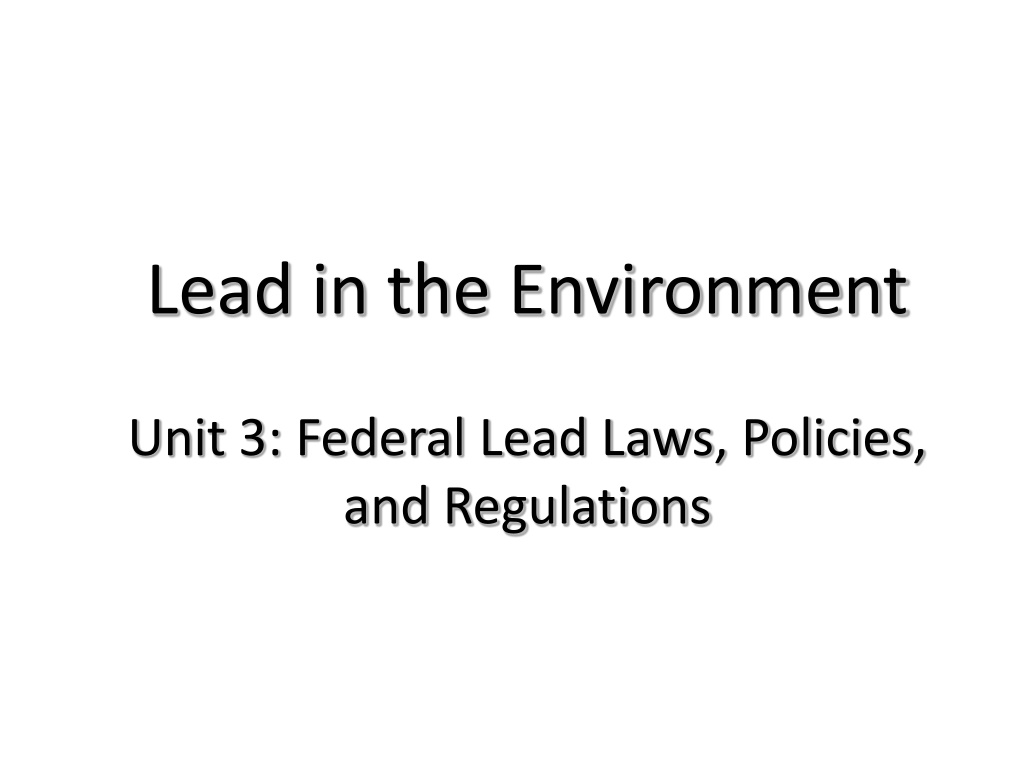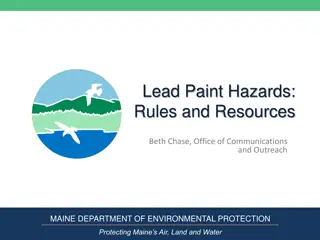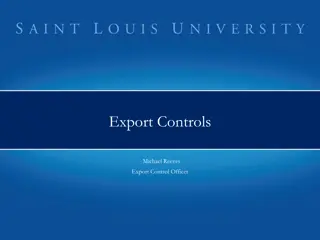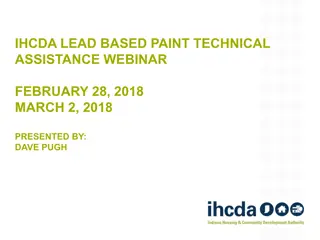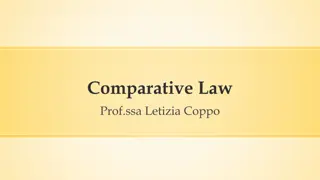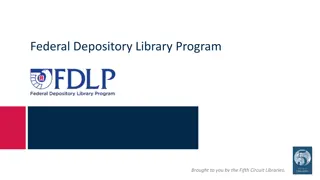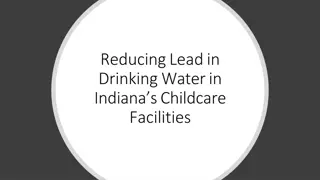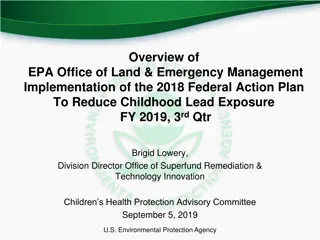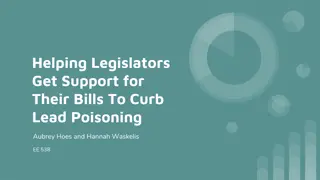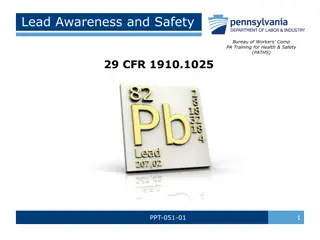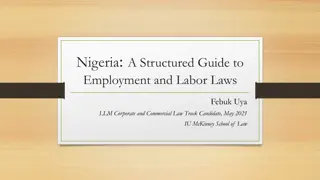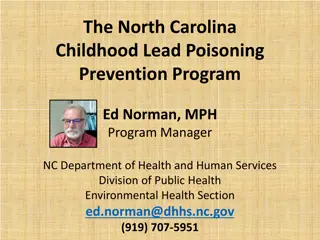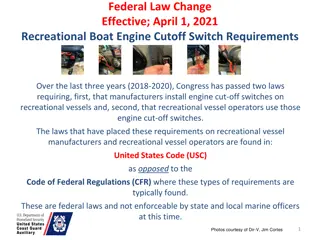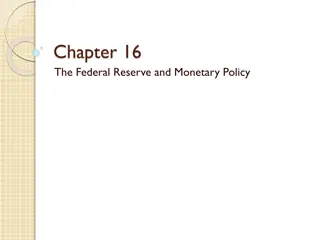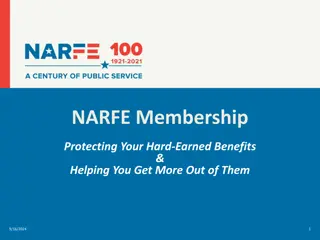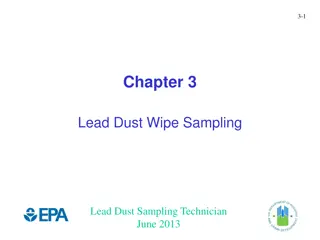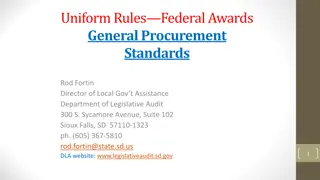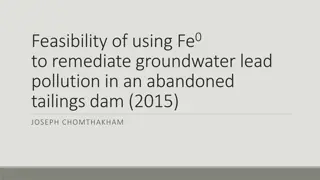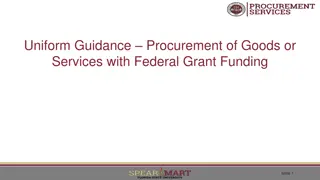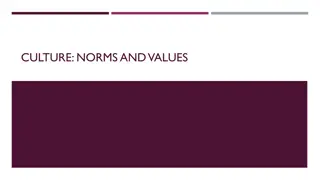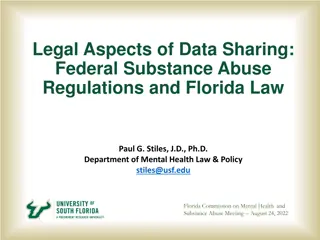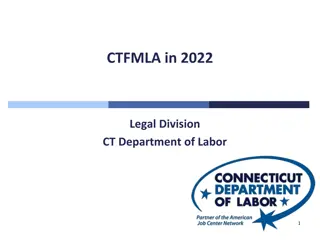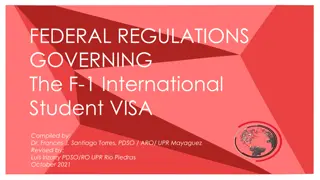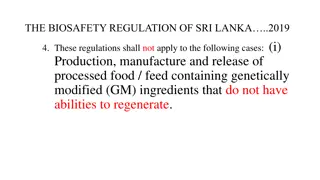Federal Lead Laws and Regulations Overview
Explore key federal lead laws, policies, and regulations including the Clean Air Act and Clean Fuel Programs, Lead-Based Paint Poisoning Prevention Act, Real Estate Notification and Disclosure Rule, and the Renovation, Repair, and Painting Rule. Learn about the history, requirements, and implications of these regulations in the effort to mitigate lead exposure and protect public health.
Download Presentation

Please find below an Image/Link to download the presentation.
The content on the website is provided AS IS for your information and personal use only. It may not be sold, licensed, or shared on other websites without obtaining consent from the author. Download presentation by click this link. If you encounter any issues during the download, it is possible that the publisher has removed the file from their server.
E N D
Presentation Transcript
Lead in the Environment Unit 3: Federal Lead Laws, Policies, and Regulations
Clean Air Act and the Clean Fuel Programs Administered by EPA (Environmental Protection Agency) First Clean Fuel Program began only 3 years after the EPA was founded, covers wide range of pollutants in fuel Clean Air Act: 1972: Clean Air Act created 1975: Lead classified as a Criteria Pollutant, requiring NAAQS (National Ambient Air Quality Standard) regulation, and allowing EPA to phase lead out of gasoline 1986: lead gas eliminated from use in cars and trucks 1995: lead gas eliminated from use in race cars, tractors, twin stroke engines, and other uses Aviation still exempt and currently uses leaded gasoline http://www.epa.gov/otaq/fuels/basicinfo.htm
Lead-Based Paint Poisoning Prevention Act HUD (Department of Housing and Urban Development) prohibits application of lead-based paint to housing constructed or rehabilitated with federal assistance, 1977 CPSC (Consumer Product Safety Commission)lists final ban on lead paint, effective 1978 Prior maximum lead level allowed in paints at 0.5%, lowered to 0.06%, an 8-fold decrease. http://portal.hud.gov/hudportal/HUD?src=/program_offices/healthy_homes/lbp/hudguidelines
Real Estate Notification and Disclosure Rule EPA and HUD jointly created in 1996 (Section 1018, Title X) Rule designed to guarantee that information about lead is shared with people who buy or rent pre-1978 homes or apartments Sellers and landlords must disclose known lead based paint and lead-based paint hazards, and provide available reports to buyers or renters Owners who do not comply can be charged up to $11,000 per violation http://www2.epa.gov/lead/lead-residential-lead-based-paint-disclosure-program-section-1018-title-x http://portal.hud.gov/hudportal/HUD?src=/program_offices/healthy_homes/enforcement/disclosure http://www.hud.gov/offices/lead/library/enforcement/fs-discl.pdf
Renovation, Repair, and Painting Rule EPA implemented in 2010 This rule is designed to ensure that contractors do not create and leave lead hazards during renovations of older buildings. Individuals doing renovations involving more than 12 square feet of paint in pre-1978 housing must be trained and certified. Contractors who do not comply are subject to fines. http://www2.epa.gov/lead/lead-renovation-repair-and-painting-program-rules
Lead-Safe Housing Rule HUD develops rule in 1999, effective 2000 This rule applies to all federally-assisted housing and certain requirements are based on: 1) the type and amount of financial assistance 2) the age of structure 3) whether the housing is rental or owner-occupied If a project exceeds $25,000 in federal assistance, full abatement is required. If a project receives less than $25,000 in federal assistance, activities intended to permanently eliminate lead paint hazards are required. http://portal.hud.gov/hudportal/HUD?src=/program_offices/healthy_homes/enforcement/lshr
Consumer Product Safety Improvement Act CPSC developed this act in 2008 This act regulates and enforces two requirements concerning lead in children s products: 1. The total lead content may not exceed 100 ppm. 2. Paint and surface coatings may not contain a concentration of lead greater than .009% or 90 ppm. http://www.cpsc.gov/en/Business--Manufacturing/Business-Education/Lead/Total-Lead-Content/
